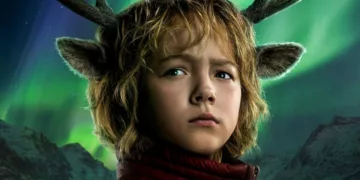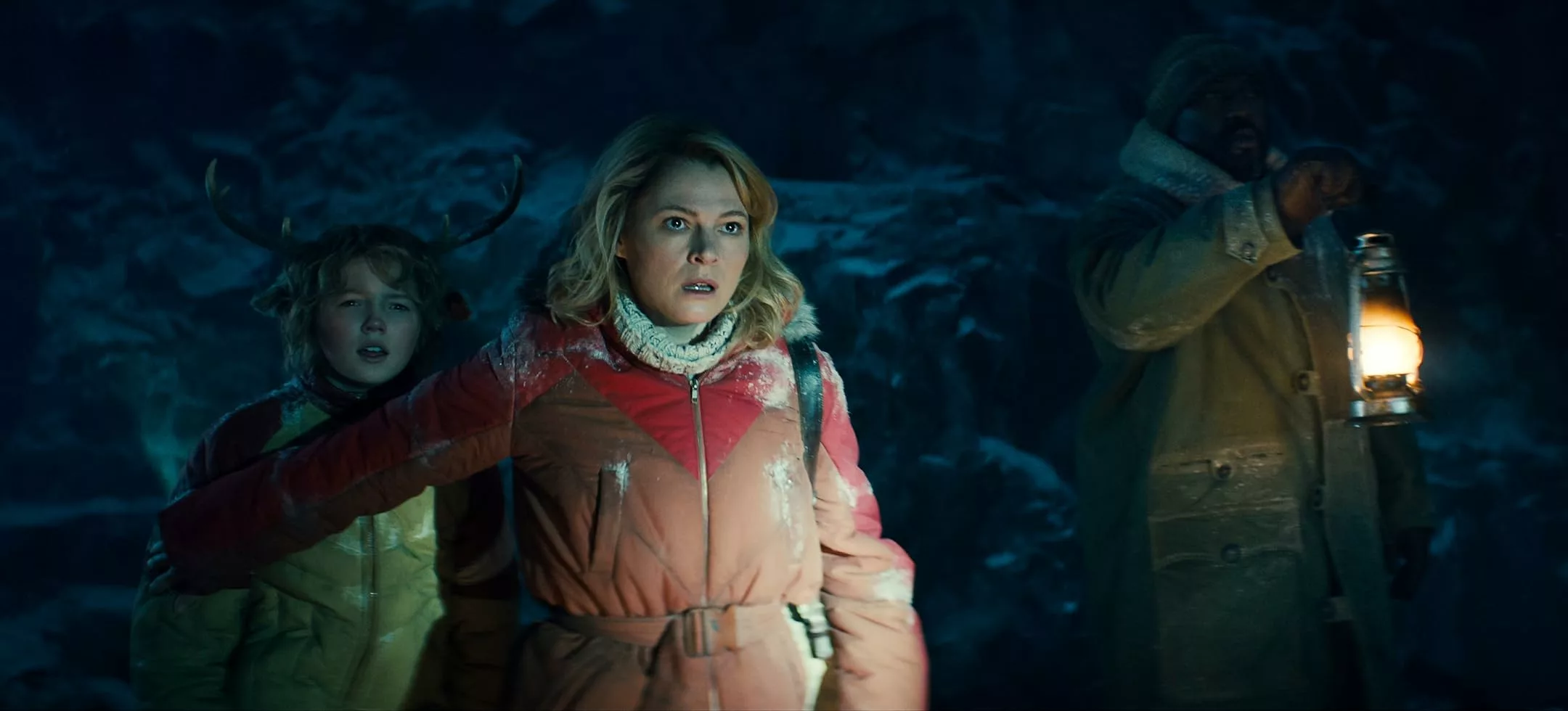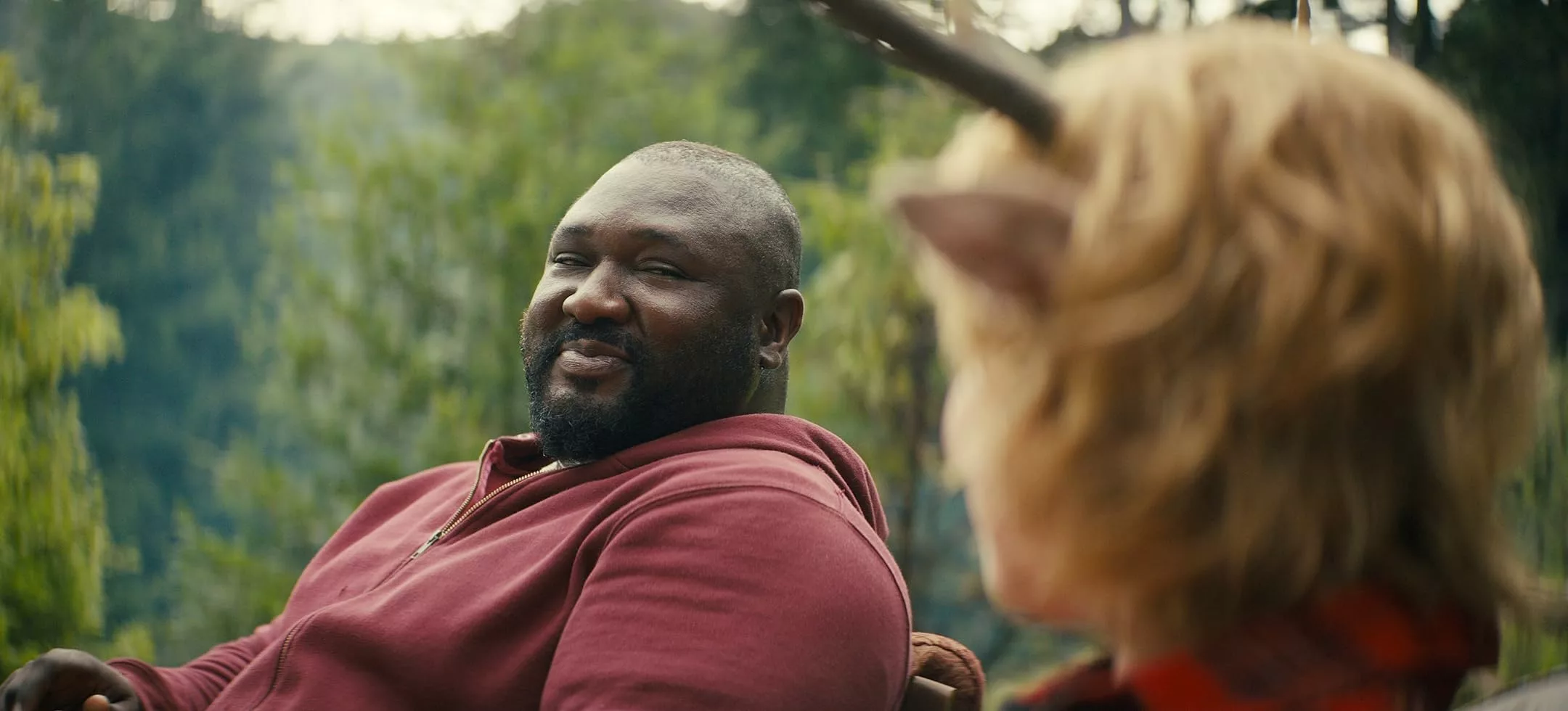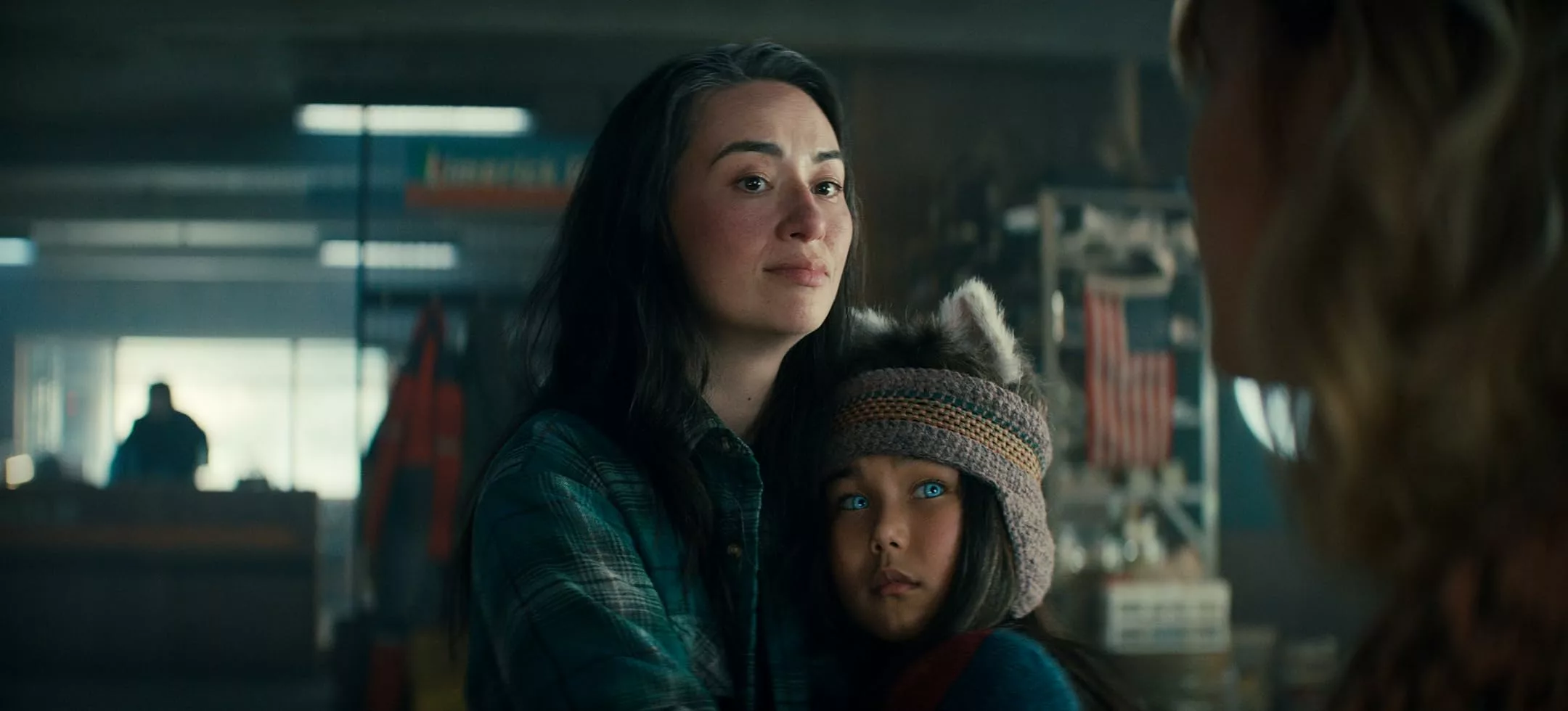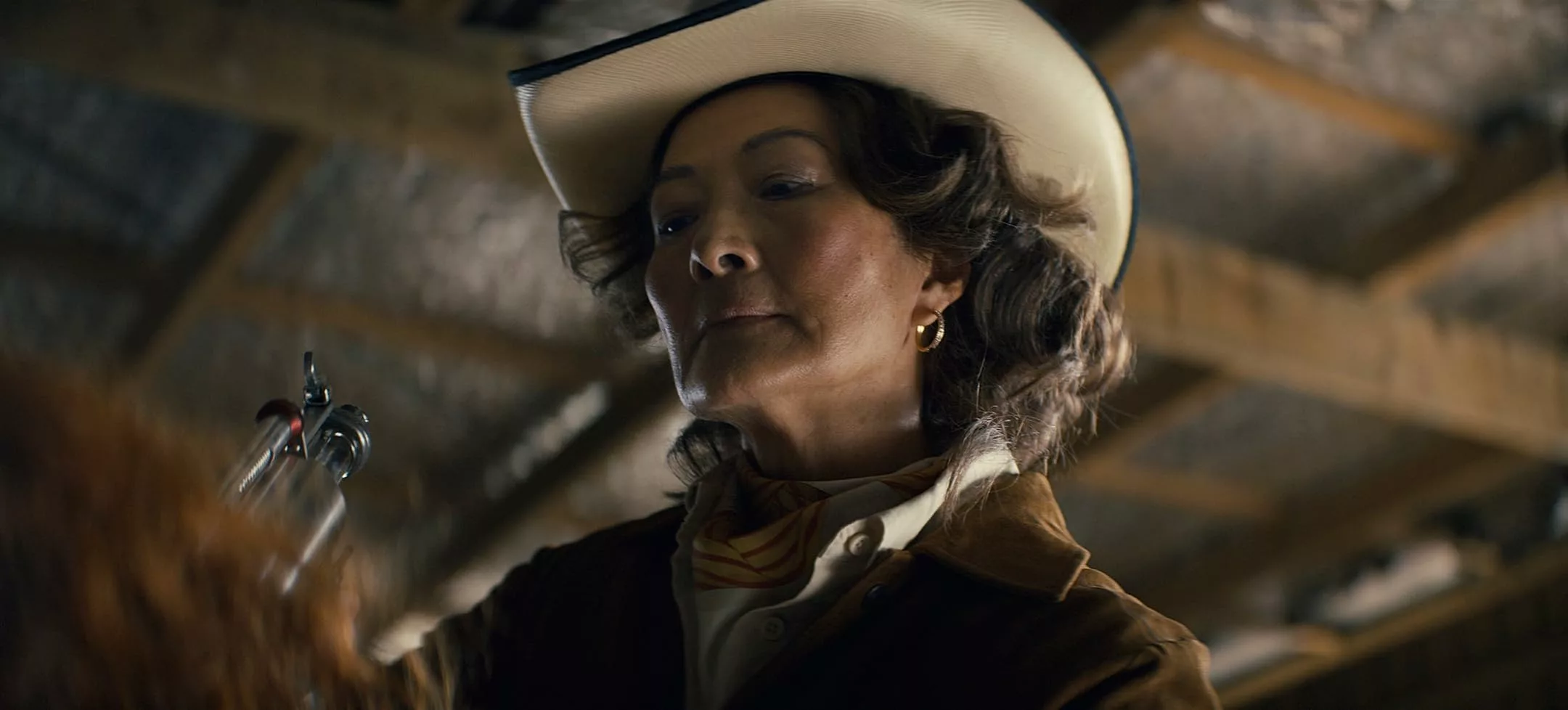The third season of the post-apocalyptic fairy tale Sweet Tooth marks the culmination of a story about finding family in unexpected places. Over years on the road, young deer-boy Gus has relied on his optimism and companions like guardian Big Man to survive in a world where most humans fear hybrids like him. Now their cross-country travels reach Alaska, as clues to curing the virus wiping out humanity may lie within an isolated research community.
But powerful forces seek to control any cure for their own gain, with Texas warlord Helen Zhang leading the charge. Once content to expand her power bases state-by-state, Zhang now spearheads a crusade to end hybrids everywhere and restore human dominance. Standing against her ruthless campaigns are not just Gus and friends but also Zhang’s conflicted daughter Rosie, tasked with keeping her mother’s hybrid-wolf pack in line despite detesting their treatment.
As long-hidden secrets emerge in Alaska and old allies make their last stands, Season 3 drives home how far Gus has come and how humans must change to build a better future together. Through it all, one constant shines: the unbreakable bond between Gus and Big Man that forms the heart of Sweet Tooth’s hopeful message. Their journey’s end may bring tragedy for some, but for others, it paves the way toward redemption.
Endings and New Beginnings
The characters of Sweet Tooth have come so far in their journeys by the final season. None more so than Gus, whom Christian Convery imbues with remarkable nuance. Only a boy in appearance, Gus has experienced more loss and hardship than many lifetimes. Yet he retains a childlike hope that inspires all around him. In Season 3, Gus comes into his own as a leader, guided by empathy and wisdom beyond his years. Convery beautifully captures Gus’ evolution, showing the man he will become.
Always at Gus’ side is Big Man, protectively portrayed by Nonso Anozie. Once bitter, Big Man finds purpose as a father figure to Gus. Their bond is the heart of Sweet Tooth, with Anozie lending depth to each stage of Big Man’s redemption. Similarly, Stefania LaVie Owen subtly nails Becky’s shifting from warrior to protector, displaying new facets of a now pacifist leader. And Naledi Murray highlights Wendy’s courage, cleverness, and emotional awakening tied to her sister.
Among the newcomers, Helen Zhang is a standout, thanks to Rosalind Chao. With ice in her veins yet fire in her soul, Zhang is a chilling nemesis to radically bring back “order.” Opposite her lies potential in Kelly Marie Tran’s Rosie, torn between duty and her humanity. And as the nurturing Siana, Cara Gee calms wintry Alaska with her care for wanderers there, including the rambunctious fox-child Nuka from Ayazkhan Dalabayeva.
Together, these characters conclude their saga in a bittersweet yet fitting way, learning that true fulfillment lies not in chasing past ideals but in building a better present and future through compassion. Sweet Tooth reminds us that even in darkness, hope and our shared essence as fellow inhabitants can light the way.
Progress Amid Prejudice
A key theme explored throughout Sweet Tooth’s final season is humanity’s resistance to change and desire to cling to the past. Several characters epitomize this struggle as they fight progress spearheaded by Gus and the hybrids.
A prime example occurs early on, when Gus encounters a family hiding their daughter’s wings for fear of being outcasts. Their close-mindedness saddens Gus, who has faced hostility all his short life merely for being different. Yet more alarming is Helen Zhang, who becomes a frightening force determined to wipe out hybrids and restart the human population.
Zhang makes it clear that she sees hybrids like Gus as unnatural obstacles standing in the way of civilization’s return. As a powerful warlord, she’ll stop at nothing to eliminate this perceived threat to the old order. Even her own daughter, Rosie, finds herself torn between advancing with the changing times or obeying her mother’s antiquated dreams of how the world used to be.
Through it all, Gus emerges as a beacon of hope for the new world taking shape. Young though he is, Convery portrays Gus’ spirit and resilience with such heart that one can’t help but root for him. His kindness even softens bitter souls like Big Man, showing how compassion can overcome prejudice. By season’s end, Gus has become a leader his people look to for guidance into a hybrid-inclusive future.
While humanity grapples with losing its dominant position, Sweet Tooth suggests progress sometimes requires leaving one’s fears behind. The coming of hybrids like Gus may not be cause for alarm, but it is an opportunity to embrace diversity and write the next chapter together. Though the road is long, Gus proves that through perseverance and goodwill, change can be steered towards justice, understanding, and the best in human nature.
Separate Strands or Cohesive Story?
Sweet Tooth’s ambitious third season continues Gus’ journey but expands the world in ways both intriguing and problematic. The introduction of new locales and characters held promise, yet they also risked straying from the story’s heart.
Setting sail for Alaska, our heroes believe answers to the Sick’s mystery lie in the northern outpost operated by Siana. And it does bring welcome color, with the snowy terrain and Siana’s caring nature. Her daughter Nuka, in particular, lightens tense moments with youthful charm.
However, devoting scarce episodes to fully fleshing out this community proved challenging. We grasp its function in the plot but know little of these people beyond surface traits. Their inclusion becomes more of a means to an end than a fully woven thread in the fabric.
Similarly, sidequests taken by secondary characters feel disconnected from the core narrative. Bear and Wendy’s subplot lacks the urgency or revelation of Gus’ mission. Though starting from an understandable desire to build upon fan favorites, splitting the party dilutes what momentum exists.
In previous seasons, such divided attention posed problems. While season three remains an aesthetically rich production, the same pacing issues emerge. With a shorter run than others, fewer episodes exist to satisfactorily resolve every introduced strand.
Some believe answering all questions is unnecessary for the overall story. But for those seeking closure on myriad elements, gaps emerge that are difficult to overlook in a concluding chapter. Sweet Tooth excels when focusing tightly on its heart; adding excessive threads risks losing sight of the true north.
In the end, it’s the story between Gus, Jepperd, and others like Thomas that resonates most deeply. Their bonds of found family, tested amid harrowing ordeals, reaffirm hope and compassion’s power to transcend even the darkest of days. Some parts of the journey may have stumbled, but the destination was as meaningful as fans could have wished.
Sweet Home Alaska
The harsh Alaskan wilderness provided the perfect backdrop for the grim climax of Sweet Tooth’s story. Vast icy tundra and snow-capped mountain vistas stretched as far as the eye could see, a chilling representation of the desolate post-pandemic world. Among this isolated beauty, our characters’ desperate struggle for survival took on an extra level of peril.
Jim Mickle’s direction captured the atmosphere with sweeping shots that emphasized their loneliness in the landscape. Yet the rugged terrain also came to symbolize nature’s enduring power to both destroy and heal. Through troubled times, the earth would persist, no matter the fate of humanity. This gave Gus and Jepperd’s journey added gravitas in their search for meaning and redemption.
Practical effects were used extensively to great effect. Intricate hybrid costumes and prosthetics realistically rendered the show’s vision of genetic resettlement. The hybrid children in particular possessed an endearing quality; their expressive faces and forms were brimming with youthful innocence. All of this brought a tangible, lived-in quality to the world that could have otherwise risked veering into implausible fantasy.
Production design similarly struck a deft balance. Environments felt authentic to the period yet acknowledged the exotic changes wrought by disease. Settlements blended scrappy frontier spirit with artistic flourishes as survivors carved civilization from the wilderness. Ruined landmarks served as poignant glimpses of the past imposing on an uncertain future.
Through its visual storytelling, Sweet Tooth found beauty even in desolation and held out hope that nature’s bounty might outlive humanity’s flaws. The results were nothing short of spellbinding.
Belonging and Becoming
Sweet Tooth has always been about more than just its post-apocalyptic premise. At its heart, this tale examines what it means to find your place in the world and evolve into who you’re meant to be. Season 3 brings these profound themes to a head through some of the series’ most impactful character work.
We see Gus shoulder the weight of responsibility for his kind with impressive grace beyond his years. Christian Convery shines in portraying the boy’s subtle transition into a leader guided by compassion. Rosie too must reconcile her loyalties, with Kelly Marie Tran imbuing each moral dilemma with emotional authenticity. Their journeys portray the challenges of belonging amid difficult choices.
Yet the show equally understands that we’re shaped by those who support us. Nonso Anozie and Amy Seimetz offer steady grit and tenderness as Jepperd and Birdie anchor Gus’s emerging self. Stefania LaVie Owen likewise nails Bear’s empowering transformation. Through such bonds, once disparate souls find solidarity and purpose.
Of course, belonging necessitates acceptance—a notion forever elusive for the hybrids. Sweet Tooth pulls no punches, depicting the prejudice that scars both victim and perpetrator. Rosalind Chao delivers a chilling villain in Zhang, a product of hatred’s power to corrode the soul. Still, glimmers of hope endure, like empathy shown to a hybrid child forced to hide their nature.
Most applause goes to the poignant finale, valuing emotional closure over neat explanations. By the journey’s end, our travelers have become the best versions of themselves. Some part, others stay, but all feel fulfilled. It’s a testament to the simple yet profound magic of finding where you truly fit in. Sweet Tooth leaves its audience feeling more whole.
Satisfying Conclusion to a Hopeful Journey
All good things must come to an end, and so too does Sweet Tooth’s tale. Yet for all the bumps in adapting Lemire’s complex comic, Netflix has on the whole done it proud with this hybrid live-action romp. Season 3 stumbles over unnecessary subplots and sidelinings of core heroes. But it redeems itself with poignant character work, breathtaking Alaskan scenery, and, most importantly, a conclusion truly earning that beautiful finale.
Through it all shines Gus, whose journey from wide-eyed innocent to guiding light for his kind could not feel more earned thanks to Convery’s incredible nuanced performance. And as Jepperd embraces his role as surrogate father, together they remind us that in this broken world, found love and purpose can still outweigh any challenge. If you’re unsure about embarking, my advice is to simply watch for the heart; there you’ll find much to uplift without forsaking thought-provoking complexity.
In the end, what lingers is Sweet Tooth’s triumph in remembering hope even amid darkness, through community and understanding across perceived divisions. A lesson all the richer for being interwoven in fantasy. While not a perfect adaptation, Netflix captured Lemire’s spirit of positive change through compassion. And for anyone seeking an uplifting, beautiful story, this promising start to post-pandemic television marks an optimistic ending well worth watching.
The Review
Sweet Tooth Season 3
While season three suffers from an unnecessary bloat of new characters that detracts from its emotional core, Sweet Tooth concludes on a highly rewarding note of hope and compassion. Portraying important themes of empathy and unity and boasting unforgettable performances from Convery and Anozie, this fantastical post-apocalyptic journey was a welcomed escape.
PROS
- Poignant characterizations of Gus and Jepperd
- Strong themes of belonging, prejudice, and humanity's relationship with nature
- A satisfying conclusion that pays off character arcs
- Beautiful visuals and setting of the Alaskan wilderness
CONS
- Season 3 introduces too many new characters that distract from the core plot.
- Secondary storylines for characters like Bear feel disjointed.
- Clumsy attempts to explain mythology overwhelm emotional throughlines.
